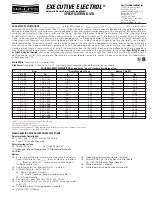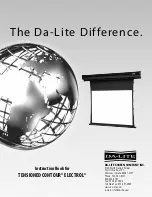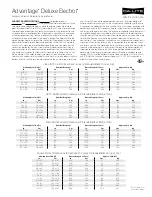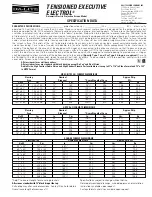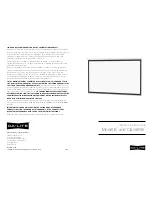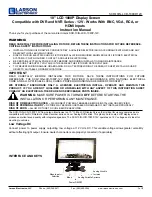
EN-6
WARNING:
Model Name:
EX53U
•
The wireless function of this projector can be used only in the United States and Canada.
This function cannot be used legally in countries other than the above.
Model Name:
EX53E
•
The wireless function of this projector can be used only in France, Germany, Italy, Ireland,Spain, Sweden, Netherlands, and the United
Kingdom. This function cannot be used legally in countries other than the above.
"Hereby, Mitsubishi, declares that this projector is in compliance with the essential requirements and other relevant provisions of Directive
1999/5/EC."
Model Name:
EX53E
The equipment was passed. The test was performed according to the following European standards:
•
EN 300 328 V.1.,7.1:2006
•
EN 301 489-1 V.1.,6.1: 2005 / EN 301 489-17 V1.2.1:2002
•
EN 50371:2002
•
EN 60950-1:2001+All:2004
Regulatory statement (R&TTE)
•
European standards dictate maximum radiated transmit power of 100mW EIRP and frequency range 2.400-2.4835GHz;
•
In France, the equipment must be restricted to the 2.4465-2.4835GHz frequency range and must be restricted to do indoor use.
Operation of this device is subjected to the following National regulations and may be prohibited to use if certain restriction should be applied.
You are cautioned that changes or modifications not expressly approved by the party responsible for compliance could void your authority to
operate the equipment.
This device complies with Part 15 of the FCC Rules. Operation is subject to the following two conditions: (1) this device may not cause harmful
interference and (2) this device must accept any interference received, including interference that may cause undesired operation.
FR
DE
IT
UK
ES
SE
NL
IE
This equipment has been tested and found to comply with the limits for a Class B digital device, pursuant to Part 15 of the FCC Rules. These
limits are designed to provide reasonable protection against harmful interference in a residential installation. This equipment generates, uses
and can radiate radio frequency energy and, if not installed and used in accordance with the instructions, may cause harmful interference to
radio communications. However, there is no guarantee that interference will not occur in a particular installation. If this equipment does cause
harmful interference to radio or television reception, which can be determined by turning the equipment off and on, the user is encouraged to try
to correct the interference by one or more of the following measures:
•
Reorient or relocate the receiving antenna.
•
Increase the separation between the equipment and receiver.
•
Connect the equipment into an outlet on a circuit different from that to which the receiver is connected.
•
Consult the dealer or an experienced Radio / TV technician for help.

























